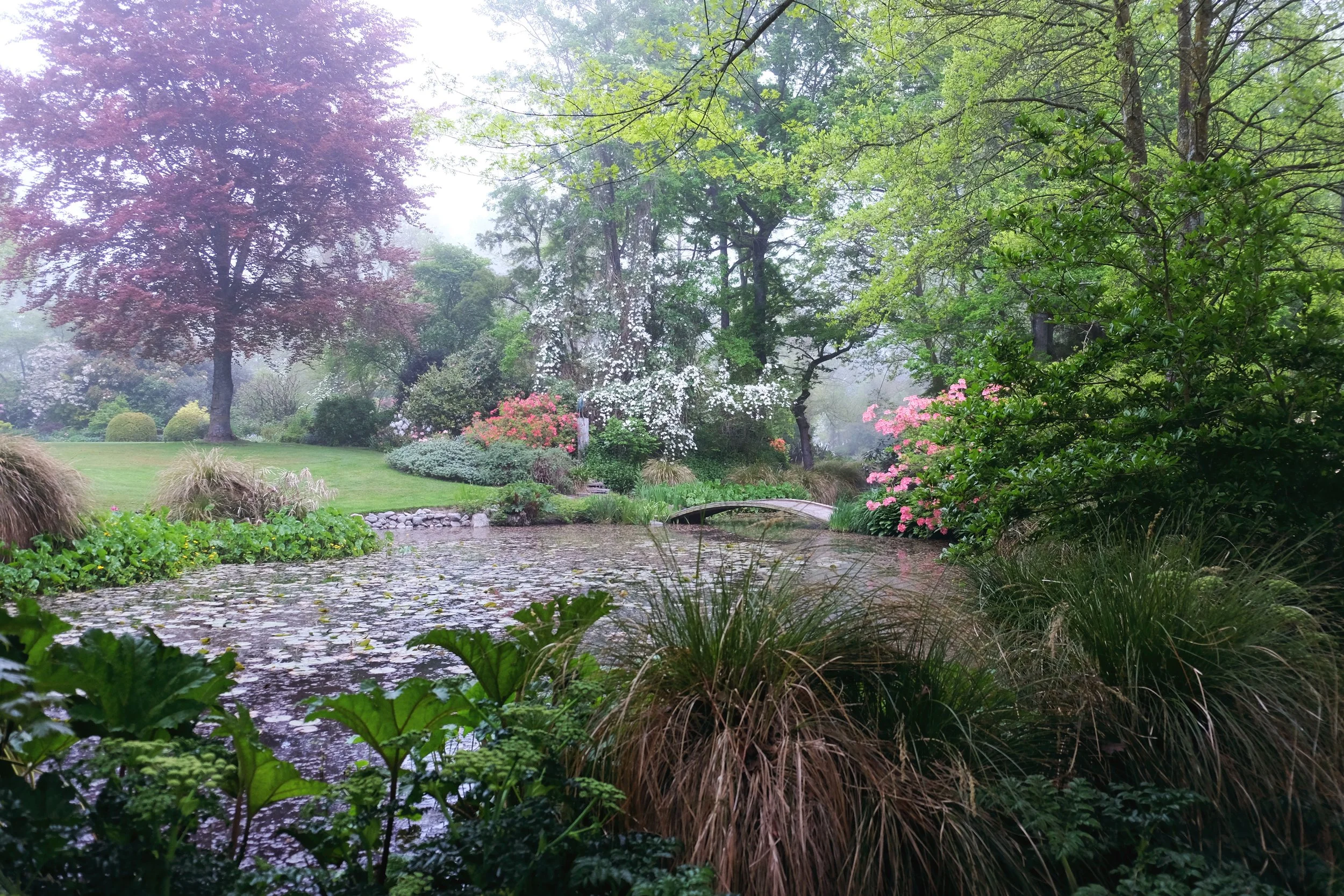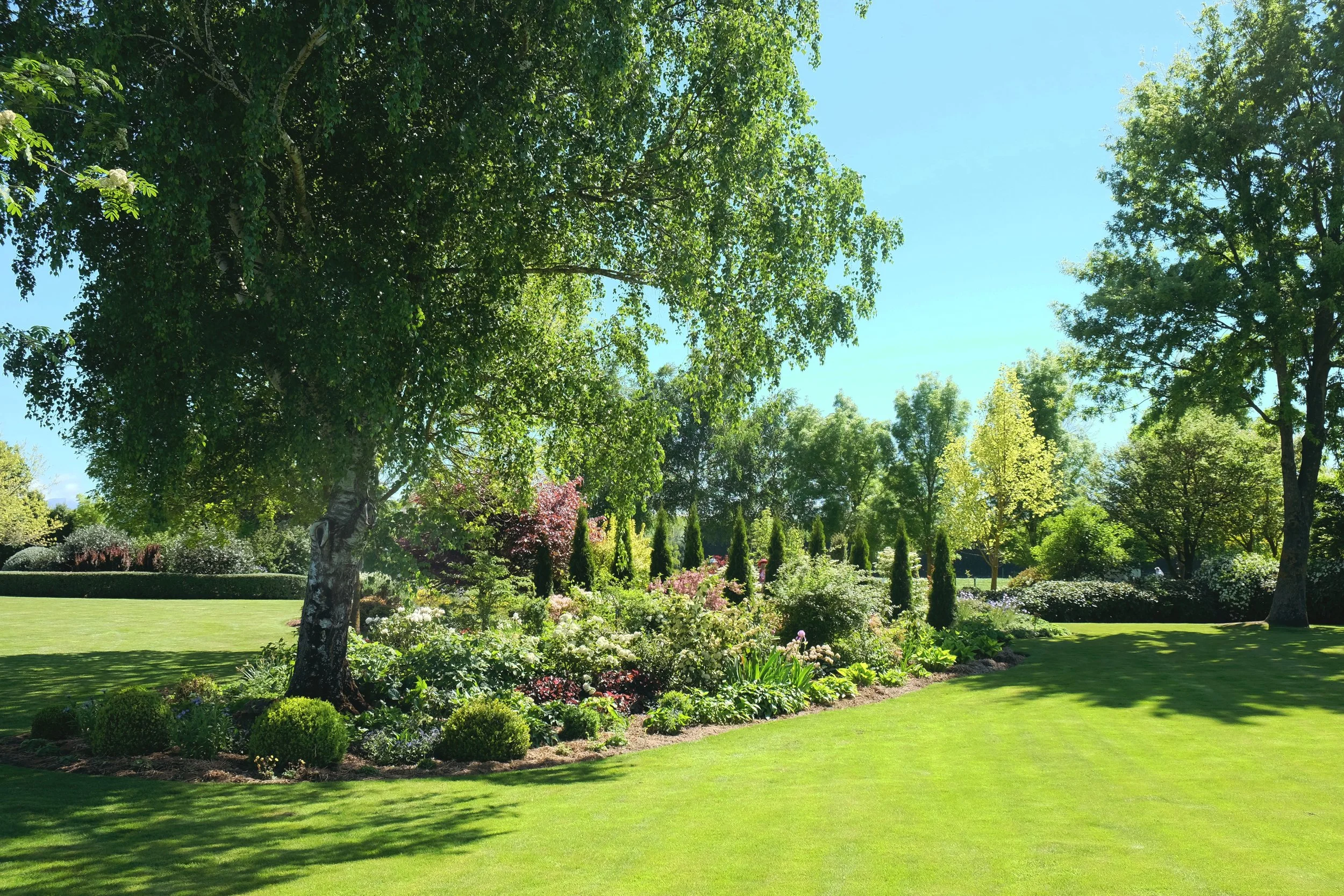On the ground with the gardeners
/I’ve had my gardening palate cleansed and bank of ideas refreshed.
While navigating the wild Canterbury Nor ’wester, sun burn, torrential downpours and social distancing at the Hurunui Garden Festival at the end of October, I was reminded of what visiting gardens has come to mean to me.
The vortex of discovery!
As part of this year’s festival, I was invited to create a series of garden walks across three participating gardens. I was there to gently steer the focus, ask connecting questions for the audience and supporting the knowledgeable gardener in keeping their train of thought.
However, my “co-hosting” was perhaps a little surplus to needs. When a gardener is given a platform to talk about their learnings and land, the wheels seem to turn, with little help required.
Of course, by being a smiling and mostly silent bystander in these sessions, I also absorbed every thread of wisdom they imparted – storing them away in my internal garden library, an area of my brain oddly able to remember everything growing-related, unlike the “important appointments” library or “husband’s birthday” library.
Penny Zino of Flaxmere Garden
On Friday, a large group met to wander the realm of Flaxmere Garden with (my self-appointed mentor) Penny Zino, exploring and sharing what has and hasn’t worked well over 55 years of growing in the harsh Hurunui environment. As we walked through each area of the 3.2 ha garden, learning about the many challenges of extreme weather and farm stock vs vegetation, it was safe to say that Penny taught us all that there was no yellow brick road to success!
Just arm yourself with passion, learn from experience and most importantly, understand the limitations of your garden’s environment.
Buy plants from nurseries colder than you
Young plants bred in milder and gentler climates to your own will curl up their feet in fright and die if forced into harsher conditions. Penny can attest to this after much money spent in her earlier years buying plants from the North Island.
Plant for interest twice a year
As her mother-in-law urged her, Penny recommends that when choosing trees, shrubs or perennial plants, look for those that offer more than a single moment of visual glory over a year.
This might be considering if they have fantastic autumn colour, or brilliant structure in their second seasonal movement. A particularly valuable piece of advice for those of us with smaller sections that need all our plants to work extra hard for their valuable piece of ground.
Doreen Dryden of Loch Leven Garden and Nursery
On Saturday morning a group of keen gardeners and I gathered to walk the garden and learn some advice around propagation from Doreen Dryden of Loch Leven Garden and Nursery in Rotherham. We walked the edges of new and established garden beds, witnessing the beautiful results of a passion that propelled the creation of a nursery.
Linseed straw as mulch
A revelation to those committed to pea straw, the linseed material is heavier and resists being moved around as much by birds or wind.
Doreen suggested it was best used where new, shrub-based beds might be getting developed, with it perhaps a little heavy for delicate perennials. It creates a fabulous thick mat to suppress weeds and retain moisture in the harsh dry heat of summer.
Plants want to grow
What a breath of fresh air it was to watch Doreen demonstrate her propagating processes from seed, to division and cuttings. She made it a less laborious and technical task by sprinkling unhusked seed across wide trays, skipping rooting hormone for cuttings and demonstrating how to lightly tug seedlings to see if they are rooted and ready to pot up.
Her entire garden is living proof of her methods. Sometimes, we need a real person to breakdown what is vital and what isn’t, as books and the Internet can get a little bogged down.
Robert Day of Ribbonwood
Sunday bought us to the last garden of the series to meet Robert Day of Ribbonwood near Cheviot. Despite a typically strong Nor’wester blowing the words out of this mouth, Robert imparted the story of establishing the house and garden over 10 years with his partner Gary Mitchell and the challenges of being presented with a bare paddock on a ridge.
Plant shelter first – you’ll need more than you think
In contrast to the other more mature gardens we visited, it was a revelation to visit Ribbonwood, which sports shelter planting that is only 10 years old. Robert and Gary began this belt planting of trees and shrubs a year or more before they broke ground for their house.
We got a real-time lesson in its effectiveness – from hairdryer-level wind blasting, to relative stillness in the cutting and vegetable gardens snuggled into the protection of the belts.
Lead the way with potatoes
A particular drawcard of Ribbonwood was learning about Robert’s beautiful, huge edible garden. He generously spoke in length about his experiences, taking us right back to plotting out the beds and gathering-up a vision for what was simply a paddock of grass pasture.
He simply started at one end by preparing and removing grass and weeds from a block of ground, digging over as much as he could, then planting potatoes. The nature of the crop and of harvesting it helped loosen the earth, to begin improving with organic matter and growing new crops in.
He continued this process with potatoes and, to this day, they lead his rotation.
My learning didn’t begin and end with each talk I was hosting, I found corners of wonder and plants to note down at all the gardens I visited, big or small.
What a pleasure it is to be a relative newbie to an activity rooted in sharing.
This is an expanded version of the article featured in my Stuff ‘Homed’ gardening column for beginners , The Press, Dominion Post and other regional papers on November 18th 2021
All words and images are my own, taken in my home and garden in Christchurch, New Zealand unless otherwise captioned.








